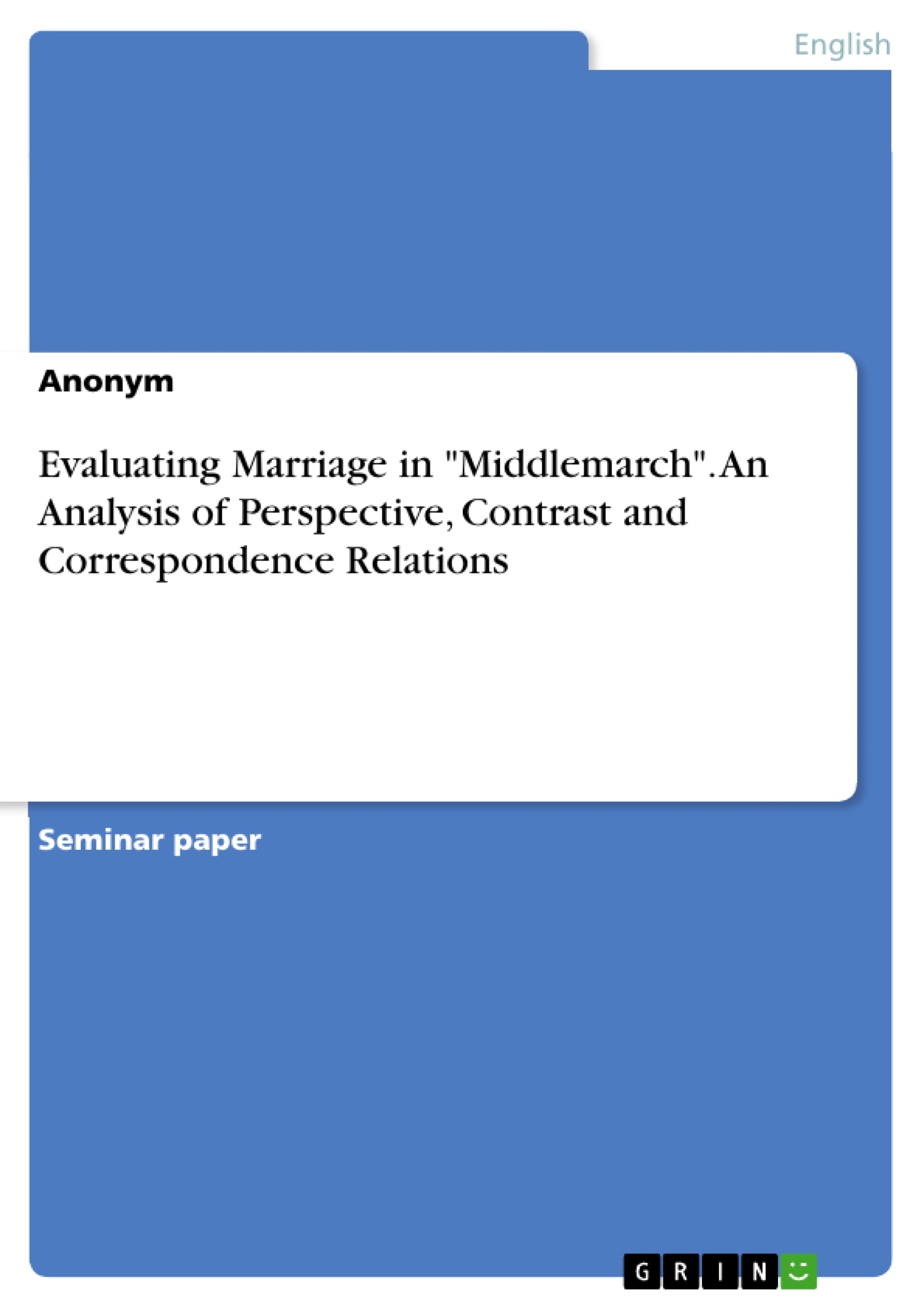Aiming to explore the evaluation of marriages in George Eliot's "Middlemarch", this paper delves into how perspective, contrast and correspondence relations, and authorial narration shape our understanding of matrimonial relationships.
Love and marriage, cornerstones of human interaction and social bonding, are frequently reflected in literature. This reflection often presents marriage as the blissful conclusion of a love story, marking a joyous milestone for the characters involved. This portrayal, however, is not a universal literary standard. For instance, in novels like "Middlemarch", characters marry early, fostering an exploration of marriage's dynamics, successes, and failures. In addressing these complexities, this paper contributes to a deeper understanding of Eliot's depiction of marriage and its function as a narrative tool.
Table of Contents
- Introduction
- Aspects of evaluation in narrative texts
- Perspective
- Relation of contrasts and correspondences
- Narration
- Evaluation regarding marriage in George Eliot's Middlemarch
- Figural Perspectives
- Relation of contrasts and correspondences of the marriages
- Narration
- Conclusion
Objectives and Key Themes
This paper aims to analyze how perspective, contrast and correspondence relations, and authorial narration in George Eliot's Middlemarch evaluate marriages. The paper explores three specific marriages within the novel: Dorothea and Casaubon, Rosamond and Lydgate, and Mary and Fred. It uses these marriages to understand how the text presents different perspectives on marriage and how these perspectives relate to each other.
- Perspective as a tool for understanding characters' attitudes and opinions about marriage
- Contrast and correspondence relations as a way to analyze the similarities and differences between different perspectives on marriage
- The role of authorial narration in shaping the reader's understanding of marriage
- The evaluation of marriage through the lens of social class, gender, and education
- The exploration of different types of marriage, including love matches and marriages of convenience
Chapter Summaries
The introduction sets the stage for the analysis by discussing the significance of love and marriage in literature and how Middlemarch explores these themes. It highlights the concept of evaluating marriage through different perspectives and aims to analyze how these perspectives contribute to the novel's overall understanding of marriage.
The second chapter explores the theoretical foundations of perspective, contrast and correspondence relations, and authorial narration. It defines these concepts and provides key insights into how they are used in narrative texts. The chapter also introduces different approaches to analyzing these aspects, emphasizing the importance of considering both character and narrator perspectives.
The third chapter delves into the evaluation of marriage in Middlemarch. It examines how the novel uses perspective to reveal the different attitudes and opinions characters hold towards marriage. The chapter also analyzes the contrast and correspondence relations between these perspectives, exploring how they contribute to a complex and nuanced understanding of marriage. Additionally, it examines the role of authorial narration in shaping the reader's interpretation of the presented perspectives on marriage.
Keywords
This paper focuses on the evaluation of marriage in George Eliot's Middlemarch. The key concepts include perspective, contrast and correspondence relations, authorial narration, social class, gender, education, love matches, and marriages of convenience. These themes are examined through the lens of the three specific marriages: Dorothea and Casaubon, Rosamond and Lydgate, and Mary and Fred.
- Quote paper
- Anonym (Author), 2021, Evaluating Marriage in "Middlemarch". An Analysis of Perspective, Contrast and Correspondence Relations, Munich, GRIN Verlag, https://www.hausarbeiten.de/document/1366463


